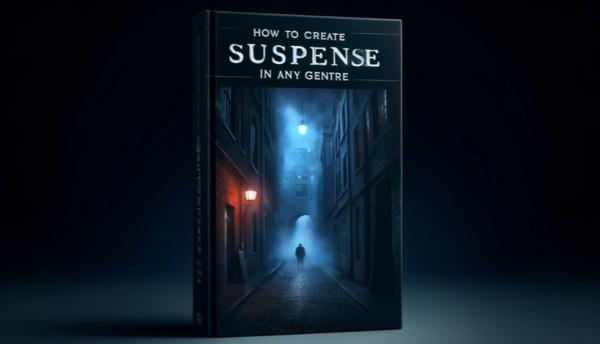A prologue is a preliminary section of a book, serving as an introduction that sets the stage for the story to unfold. It can provide background details, introduce key characters, or establish the tone and setting. However, not every book benefits from a prologue, and including one can sometimes hinder rather than help the narrative. Understanding whether a prologue is necessary requires careful consideration of its purpose and impact on the reader. Additionally, a lengthy prologue may disengage the reader and negatively affect the impression of literary agents when submitting sample pages.
This article will explore the necessity of prologues in books, highlighting the importance of focusing on the actual story. We’ll delve into common pitfalls writers face when crafting prologues and discuss diverse opinions among authors.
Prologue Necessity in Books – Is It Essential?
A prologue is like a sneak peek into your book’s world, setting the stage before the main story begins. It serves as an introduction, offering essential background details, establishing the tone, or hinting at events to come. Think of it as a way to enhance the reader’s experience right from the start.
So, why do authors use prologues? There are a few common reasons. First, a prologue can deliver a crucial backstory without interrupting the flow of the main narrative. It’s a way to set the scene, especially in stories with complex settings or histories. Additionally, a prologue can deliver important details that contribute to a better understanding of the plot, enhancing the reader’s experience without being mandatory. Second, it can introduce a key event or character that plays a significant role later in the story but doesn’t fit neatly into the opening chapters.
Prologues are particularly popular in genres like fantasy and science fiction, where world-building is vital. For instance, in a fantasy novel, a prologue might delve into a legendary battle that shapes the world the characters live in. In sci-fi, it might describe a futuristic society or groundbreaking technology. By providing this context upfront, prologues help readers dive into these intricate worlds with a better understanding and appreciation of what’s to come.
Your Publishing Journey Awaits – Start NowUnderstanding Your Actual Story
When writing a book, it’s crucial to keep the focus on your main story. A compelling narrative that grips readers from the first page can often do without the added layer of a prologue. Focusing on the main story ensures that the readers are immediately drawn into the core events and characters, making for a more immersive and engaging experience. It is important not to introduce the main character in the prologue but rather drop them into the first major action of the story to engage the reader effectively.
To determine if your story can stand on its own without a prologue, start by asking yourself a few key questions:
Does your opening chapter introduce the main characters and setting effectively?
Can you weave necessary background details into the narrative naturally?
Is the first chapter strong enough to hook the reader without additional context?
If the answer to any of these questions is yes, then your story likely doesn’t need a prologue. Be cautious of info-dumping in the opening pages; instead, integrate world-building elements organically within the main narrative.
Consider some examples of strong openings that dive directly into the main narrative. J.K. Rowling’s “Harry Potter and the Sorcerer’s Stone” begins with a mysterious and intriguing first chapter that introduces key characters and sets the stage for the story, without needing a prologue.
Similarly, George Orwell’s “1984” thrusts readers directly into the dystopian world, immersing them immediately in the protagonist’s life and the oppressive society in which he lives.
Prologue Pitfalls: Common Mistakes to Avoid
Writing a prologue can be tricky, and many writers stumble into common pitfalls that can weaken their story. A well-crafted prologue can effectively set the scene for the fictional world, providing context for the story.
One of the biggest mistakes is the dreaded info dump—bombarding the reader with too much background information right at the start. While it might be tempting to share all the fascinating details of your world or characters, this can overwhelm and bore readers, causing them to lose interest before the story even begins.
Another common error is filling the prologue with minor or irrelevant details that don’t significantly contribute to the main narrative. This can create a disconnect when readers realize that the prologue’s content has little bearing on the story they’re about to read. Instead of providing valuable context, it feels like a detour, leaving readers questioning its relevance.
Ineffective prologues often fail because they lack a clear purpose or connection to the main story. For example, a prologue that describes an ancient battle in painstaking detail but never ties back to the main plot can leave readers confused and frustrated. Similarly, a prologue that introduces characters or events that never reappear can feel like a waste of time, making readers question its relevance.
To avoid these pitfalls, focus on crafting a prologue that is concise, relevant, and directly tied to the main narrative. Ensure that any background information provided is essential and intriguing, serving to enhance rather than hinder the reader’s experience.
For instance, in George R.R. Martin’s “A Game of Thrones,” the prologue introduces the mysterious and terrifying White Walkers, setting the tone for the entire series and sparking the reader’s curiosity about this looming threat.
By steering clear of common mistakes and ensuring your prologue has a clear purpose, you can create an engaging and effective introduction that adds value to your story and captivates your readers from the very beginning.
So Many Writers, So Many Opinions
When it comes to prologues, opinions among writers are as diverse as the stories they tell. Some authors swear by them, while others avoid them like the plague. There is no one-size-fits-all answer.
Stephen King, for instance, is known for his stance against prologues. He believes that a story should start strong without needing an introductory section. In his book “On Writing,” King states, “I’ve seen too many prologues that have absolutely no relevance to the book.” His preference is to dive straight into the narrative, grabbing readers’ attention from the first sentence.
On the other hand, Robert Jordan, author of the famous “Wheel of Time” series, frequently used prologues to set up his complex and expansive world. Jordan’s prologues often provided crucial context and introduced key plot elements that were essential for understanding the unfolding story. His approach shows how a well-crafted prologue can enhance a reader’s experience, especially in epic fantasy genres.
Margaret Atwood offers another perspective. She suggests that the decision to use a prologue depends on the story’s needs. Atwood remarks, “A prologue in a novel is like a stage set in a play, introducing the characters, the setting, and sometimes the themes. It can be indispensable, but it can also be dispensed with if it doesn’t add value.”
Ultimately, whether to include a prologue should be a decision based on what best serves the narrative and engages the reader.
Crafting a Good Prologue
Creating an effective prologue involves careful consideration and attention to detail. Here are key elements and tips to ensure your prologue is engaging and relevant, along with examples of well-written prologues from popular books.
Key Elements of an Effective Prologue
1. Purpose and Relevance: Ensure your prologue has a clear purpose. It should provide essential background information, set the tone, or introduce a crucial plot element that will be significant later in the story.
2. Intrigue and Hook: A good prologue should immediately grab the reader’s attention. Start with an intriguing scenario or a compelling question that makes readers eager to dive into the main story.
3. Connection to the Main Narrative: The prologue should be directly linked to the main plot. It should either foreshadow events or provide context that enhances the reader’s understanding of the story.
Your Publishing Journey Awaits – Start NowTips for Writing an Engaging Prologue
1. Keep it Concise: Avoid lengthy descriptions or excessive details. A prologue should be short and to the point, providing just enough information to set the stage.
2. Focus on Action or Emotion: Begin with an action scene or an emotional moment that highlights the stakes or themes of your story. This creates an immediate connection with the reader.
3. Introduce Key Elements: Use the prologue to introduce important elements like the setting, a significant event, or a mysterious character. Make sure these elements are relevant to the plot.
4. Avoid Info Dumps: Instead of overwhelming readers with too much information, weave background details into the narrative naturally. Focus on what’s essential for understanding the story.
Examples of Well-Written Prologues
“The Hobbit” by J.R.R. Tolkien: The prologue provides a concise history of hobbits, setting the stage for Bilbo’s adventure without overwhelming the reader with details.
“Harry Potter and the Philosopher’s Stone” by J.K. Rowling: The prologue introduces the magical world and the importance of Harry, immediately capturing readers’ interest.
By focusing on these key elements and tips, you can craft a prologue that not only enhances your story but also engages and excites your readers from the very beginning.
World Building and Background Details
In fantasy and sci-fi genres, world-building is crucial, and a prologue can be an excellent tool to set the stage. It allows you to introduce your readers to the unique aspects of your world, such as its history, rules, and key events, without bogging down the main narrative. The goal is to create a vivid and immersive setting that captivates readers from the start.
Some authors use short stories to break down the structure of their novels, providing examples like ‘Star Wars’ to illustrate different approaches to experiencing the story. This method emphasizes the importance of giving readers more while focusing on the thematically important aspects of the story.
Balancing Information and Interest
While world-building is essential, it’s important to balance background information with maintaining reader interest. Avoid turning your prologue into an info dump. Instead, weave in necessary details through engaging scenes or intriguing events. Focus on what’s essential for understanding the story, leaving more detailed exposition to be discovered naturally throughout the book.
Effective Examples of World-Building Prologues
“Dune” by Frank Herbert: The prologue gives a glimpse of the political and ecological complexities of Arrakis, setting up the epic saga without overwhelming the reader with information.
“A Song of Ice and Fire” by George R.R. Martin: The prologue of “A Game of Thrones” introduces the mysterious and terrifying White Walkers, establishing the book’s dark and foreboding atmosphere while hinting at the larger conflict.
An effective prologue can immerse readers in your world from the start, ensuring they are eager to explore further.
Setting the Story’s Tone and Introductions
A well-crafted prologue can set the tone for your entire book, giving readers a taste of what to expect. Whether it’s a sense of mystery, adventure, or foreboding, the prologue should immediately convey the mood of your story. This establishes the atmosphere and prepares readers for the journey ahead.
Introducing Main Characters and Initial Conflict
A prologue is also a great place to introduce your main characters and the initial conflict. Instead of overwhelming readers with backstory, show your characters in action, facing challenges that hint at the larger plot. This makes them feel real and relatable, drawing readers into their lives and struggles.
Hooking the Reader from the Beginning
To hook the reader from the very beginning, start your prologue with an engaging scene or a provocative question. Use vivid descriptions and dynamic actions to pull readers in. For example, in “The Hunger Games” by Suzanne Collins, the prologue sets up the dystopian world and the looming threat of the games, instantly gripping readers with its intensity and stakes.
By setting the tone, introducing key elements, and capturing the reader’s interest from the start, your prologue can be a powerful tool to ensure readers are eager to turn the page and dive into your story.
First Chapter vs. Prologue: Making the Right Choice
A prologue serves as an introduction that stands apart from the main narrative, often providing background information, setting the tone, or hinting at future events. In contrast, the first chapter is the official start of your story, diving straight into the plot and character development.
Deciding When to Merge Prologue Content into the First Chapter
Sometimes, the information intended for a prologue can be seamlessly integrated into the first chapter. If the background details or setup can be woven naturally into the main narrative, it might be more effective to start with a strong first chapter. This approach can immediately engage readers with the main story without the need for a separate introduction.
Examples Where the First Chapter Serves Better
“To Kill a Mockingbird” by Harper Lee: The first chapter introduces Scout Finch and sets up the story’s setting and tone without needing a prologue. The details about the town and its history are skillfully woven into the narrative.
“The Catcher in the Rye” by J.D. Salinger: The novel begins with Holden Caulfield directly addressing the reader, immediately drawing them into his story and mindset without the need for a separate prologue.
“1984” by George Orwell: The first chapter plunges readers directly into the dystopian world and the protagonist’s life, effectively establishing the setting and tone without a prologue.
Conclusion: Happy Writing Adventures Await!
Deciding whether your book needs a prologue is a crucial step in crafting your story.
Final Tips for Deciding on a Prologue
1. Purpose and Relevance: Ensure your prologue has a clear purpose and is directly tied to the main narrative.
2. Avoid Info Dumps: Keep it concise and avoid overwhelming readers with excessive background information.
3. Hook the Reader: Start with an engaging scene or question that captures interest immediately.
4. Test Your Opening: Consider merging prologue content into the first chapter to see if it enhances the story’s flow.
Encouragement for Your Writing Journey
Embarking on the journey of writing a book is both exciting and challenging. Whether you decide to include a prologue or dive straight into the first chapter, remember that the most important thing is to tell a story that you are passionate about. Trust your instincts, listen to your characters, and stay true to the world you’re creating.
Writing is a journey filled with discovery and creativity. Each decision you make, from the first word to the final draft, shapes your unique narrative voice. So, take a deep breath, put pen to paper, and let your imagination soar. Happy writing adventures await, and may your story captivate readers from the very first page!
Ready to take the next step in your writing journey? Whether you’re working on your first draft or polishing your manuscript, Spines is here to support you every step of the way. Join our community of passionate authors, get expert tips, and discover resources to help you craft a book that truly shines. Visit Spines today and bring your story to life!
Your Publishing Journey Awaits – Start Now





